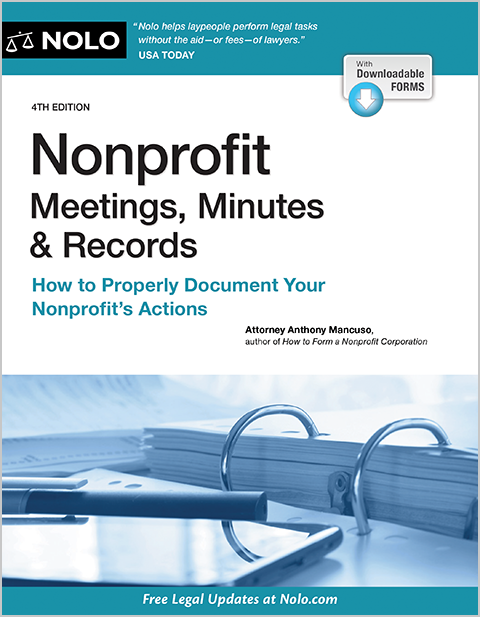Examining the Challenges and Opportunities Faced by a Nonprofit Company in Getting Its Mission and Goals in Today's Culture
In the existing landscape, nonprofit firms are browsing a complex variety of obstacles, such as changing financing resources and boosted competition for contributor involvement. By examining exactly how nonprofits can strategically adapt to these characteristics, we can discover not just the approaches they employ to get rid of obstacles however additionally the untapped potential that lies within their functional frameworks.
Present Landscape for Nonprofits
The present landscape for nonprofits is defined by an intricate interplay of advancing financing versions, enhanced competition for contributor interest, and increasing demands for liability and openness. Not-for-profit companies are progressively diversifying their income streams to include grants, individual donations, corporate sponsorships, and social business initiatives. This shift mirrors a calculated reaction to typical funding resources ending up being extra unforeseeable and affordable.
Furthermore, the rise of data systems has actually transformed exactly how nonprofits involve with prospective benefactors. Social media, crowdfunding, and on the internet campaigns are now crucial tools for reaching more comprehensive audiences, yet they likewise escalate competition amongst companies competing for minimal resources. In this atmosphere, nonprofits have to refine their messaging to efficiently record the interest and dedication of supporters.
In addition, stakeholders are demanding higher transparency pertaining to how funds are designated and the measurable effect of not-for-profit activities. This fad requires that organizations adopt durable accountability actions, including in-depth reporting and examination frameworks, to show their effectiveness. As a result, the not-for-profit sector is browsing a landscape that requires cutting-edge thinking, calculated adaptability, and a dedication to moral methods in order to prosper amidst these dynamic difficulties and chances.
Secret Obstacles Run Into
Navigating the nonprofit sector presents a myriad of challenges that can impede organizational performance and sustainability. Among the most pressing problems is the dependence on irregular financing resources. Nonprofits commonly depend on gives, contributions, and government support, which can vary substantially, causing economic instability and difficulties in lasting preparation.

Team retention and volunteer engagement position more challenges, as lots of nonprofits battle to use competitive salaries and advantages. The high turnover rates can interrupt organizational continuity and affect service delivery.
Furthermore, adapting to technological developments and digital transformation remains a difficulty for many nonprofits. An absence of sources and proficiency can avoid organizations from leveraging technology effectively, thus restricting their outreach and effectiveness.
Ultimately, these obstacles call for nonprofits to employ strategic preparation and innovative approaches to keep their objective and guarantee sustainability in a complex landscape. nonprofit agency.
Arising Opportunities
Exactly how can nonprofits harness emerging possibilities to improve their impact? In today's swiftly progressing landscape, nonprofits have the possibility to leverage technical developments, shifting social characteristics, and enhanced public understanding to enhance their missions.
In addition, partnership with organizations and other markets is coming to be more widespread, presenting nonprofits with accessibility to sources, know-how, and innovative services. Collaborations can enhance efforts, drive neighborhood involvement, and create sustainable influences. Additionally, the growing focus on corporate social obligation offers nonprofits chances to align with companies that prioritize social influence, gaining monetary support and shared objectives.
The raising focus on data-driven decision-making makes it possible for nonprofits to much better analyze their outcomes and programs, improving responsibility and efficiency. By accepting these emerging chances, nonprofits can not Find Out More just strengthen their functional capacities yet likewise expand their impact in resolving pushing social problems, ultimately driving purposeful adjustment in their areas.
Strategies for Adjustment
Adapting to a constantly transforming environment is important for nonprofits intending to sustain their influence and performance. To navigate the intricacies of modern society, nonprofits have to execute calculated approaches that improve their strength and responsiveness.
One key strategy entails leveraging technology to broaden and enhance procedures outreach. By making use of home electronic systems, nonprofits can boost interaction with stakeholders, boost fundraising initiatives, and rise awareness of their mission. Additionally, adopting data-driven decision-making practices allows organizations to assess their programs' effectiveness and adjust techniques based upon empirical evidence.
Collaboration with other organizations-- both for-profit and not-for-profit-- can foster source sharing and development. nonprofit Going Here agency. Partnerships can result in shared expertise, moneying possibilities, and broadened networks, eventually enhancing the collective influence
In addition, growing a culture of adaptability within the organization is critical. Educating personnel to embrace change and urging imaginative analytical can empower groups to react successfully to emerging challenges.
Study and Success Stories
Effective adjustment methods in the nonprofit market can commonly be illustrated through engaging instance researches and success tales. One significant example is the "Feeding America" network, which changed its operations during the COVID-19 pandemic. By leveraging innovation and neighborhood partnerships, the organization scaled its food distribution initiatives to meet the unprecedented need, serving numerous family members that faced food insecurity.
Another impactful instance is the "Boys & Girls Clubs of America," which adapted its programs to an online format during lockdowns. By presenting on the internet mentorship and interesting tasks, they maintained links with youth throughout the country, guaranteeing ongoing support and advancement despite the challenges postured by social distancing.
Likewise, the "Globe Wild Animals Fund" has effectively incorporated community-based preservation strategies, equipping local populaces to participate in wild animals defense efforts. This method not only fosters area ownership however additionally improves environmental sustainability.
These case studies highlight just how nonprofits are not only resolving instant obstacles but are also producing long-term remedies that align with their missions. By sharing such success stories, companies can inspire others to innovate and adjust, inevitably driving positive change within their neighborhoods.

Conclusion
In verdict, not-for-profit agencies today navigate a complex landscape defined by monetary instability, competitors, and labor force obstacles. Inevitably, resolving both chances and obstacles will certainly be crucial for nonprofits to fulfill their missions and accomplish long lasting influence in society.
In the current landscape, not-for-profit agencies are browsing an intricate selection of obstacles, such as rising and fall financing sources and enhanced competition for donor engagement. The not-for-profit field is browsing a landscape that needs ingenious thinking, tactical adaptability, and a commitment to moral techniques in order to prosper in the middle of these dynamic obstacles and chances.
Navigating the nonprofit sector offers a myriad of obstacles that can hinder business performance and sustainability.In final thought, nonprofit firms today browse a complex landscape identified by economic instability, competitors, and workforce challenges. Inevitably, attending to both chances and challenges will certainly be critical for nonprofits to fulfill their goals and achieve long-term effect in society.
Comments on “Nonprofit Company: Encouraging Organizations to Drive Social Adjustment”